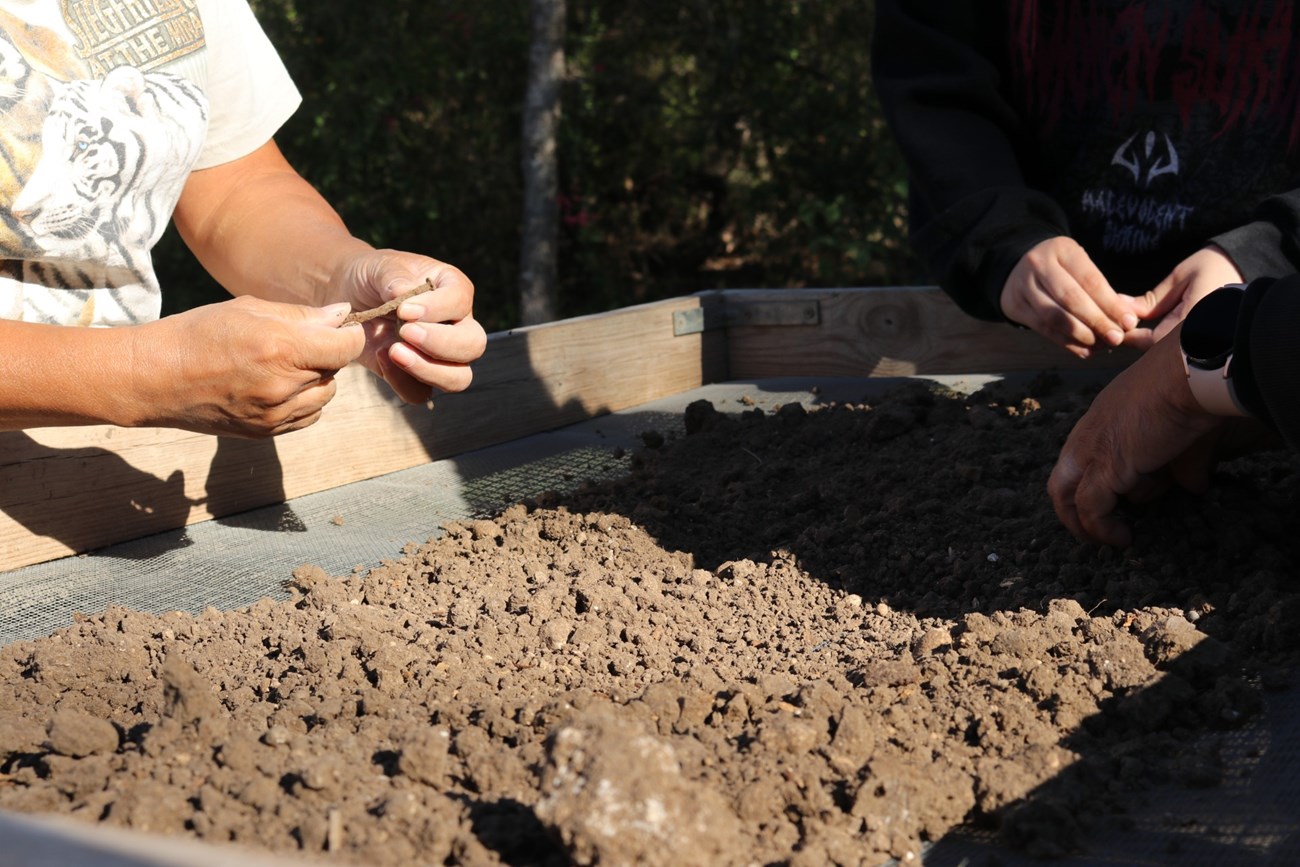Last updated: May 30, 2024
Article
Archeological Research at Mission Espada's Indigenous Quarters

Chantelle Ruidant-Hansen
While we know that Indigenous people were vital to the overall functioning, purpose, and construction of mission systems, we do not fully understand what their daily lives looked. Sources such as friar reports and oral histories help shape what their lives would have looked like. Similarly, archeology allows researchers to better understand daily life through material culture. It helps to answer questions such as: What food did people eat? What household objects did they own? What beliefs and traditions did people keep?
Read more about University of Texas at Austin Ph.D. candidate, Kelton Sheridan's archeological research at Mission Espada's Indigenous Quarters as she explores the answers of the questions listed above.

Chantelle Ruidant-Hansen
Kelton Sheridan is an archeologist whose current research focuses on Indigenous persistence in the 1700s. Kelton completed her master’s degree from the University of Massachusetts, Boston where she analyzed the ceramic assemblages of three households from the 18th and 19th centuries on the Eastern Pequot Tribal Nation in Connecticut. Through participation in this project, she came to see how a long-term collaborative project between Indigenous communities and archeologists could mutually benefit both groups. When she started her PhD at the University of Texas at Austin, she wanted to develop a project that similarly looked at Indigenous peoples in the colonial period, an area of study that is often misunderstood within archeology as there is a common perception that Indigenous peoples ceased to exist with the arrival of European settlers, whether through genocide or assimilation. The San Antonio missions, the site of her doctoral fieldwork, are an ideal location to study these complex colonial engagements as they were established on the frontier of the Spanish empire in the early 18th century as a means for gaining control over the people and ultimately the land and its resources.
Archeology in the historic period is exciting and important. While one can use the written record to understand overarching laws and ideals that shaped society and interactions with Indigenous communities, the material record can often provide a different perspective of people that were not ultimately the focus of the writings. For example, while it was crucially important in the overall functioning of a mission system that Indigenous peoples were present and working in these spaces, we do not fully understand what their daily lives looked like apart from the limited information that the friars wrote about them. Archeology has the power to remedy this gap in our knowledge. In her research, Kelton looks for clues in the materials excavated from the living quarters of the Indigenous peoples at the mission to answer questions about their daily life: Were they consuming food that was overtly not Spanish? What kind of objects did they keep in their living spaces? Did they hold on to anything that point directly to precolonial beliefs and traditions?

Kelton Sheridan
Many times what archaeologists can say about the material record comes down to their interpretive frameworks and the ways they ask their research questions. The materials excavated from the Indigenous quarters can provide insight into the long-term processes of re-articulation and negotiation of identity that occurred through colonial interactions between the missionaries and the Indigenous communities in the 18th and early 19th centuries.
"Something as seemingly small and trivial as a broken piece of pottery can say a lot about cultural practices, especially when put in the context of other artifacts in certain spaces." -Kelton Sheridan, UT Austin PhD Candidate
For example if certain ceramics that from pre-mission life were still being produced and used in the mission, this can speak to a few different interpretations. Perhaps the friars were allowing the neophytes to continue their ceramic traditions because they needed more ceramics to supply the mission than they had access to via their annual caravan. Or the presence of a very old projectile point in their living spaces could point to veneration of their ancestors through the finding and keeping of an ancient arrowhead. Some of the information artifacts can give us is more overt and sometimes it is much more subtle, but nevertheless important.

Kelton Sheridan
While the analysis of the artifacts from these excavations is still ongoing (meaning in depth interpretations of the archeology are still forthcoming), Kelton’s doctoral research explores the inherent value of focusing on Indigenous spaces in colonial settings to the field of archaeology. In the mid 20th century, it was common for archeologists to study Indigenous cultures in the prehistoric period, and then conclude that most of them assimilated to colonial cultures so much with the arrival of the Europeans that they become virtually invisible to identify in the archeological record. Work in recent decades has pushed back at this idea by trying to highlight the everyday experience of Indigenous peoples in the colonial period and re-frame these interactions as cultural negotiations and adaptations as opposed to assimilation and cultural loss.

Kelton Sheridan
During the field excavations in the Indigenous quarters, Kelton worked alongside members of Indigenous communities who can trace their ancestry all the way back to individuals that lived in the missions in the 1700s. For many descendants, the missions are a place with a sort of gravitational pull that keeps bringing them back. It is a space with deep sacred meaning where their ancestors lived, worked, had families, and experienced a range of things both good and bad. The next step in archaeology’s changing approach to these examinations is to continuing working with members of Indigenous communities in the work being done, demonstrating that the past does not solely belong to scientists.
